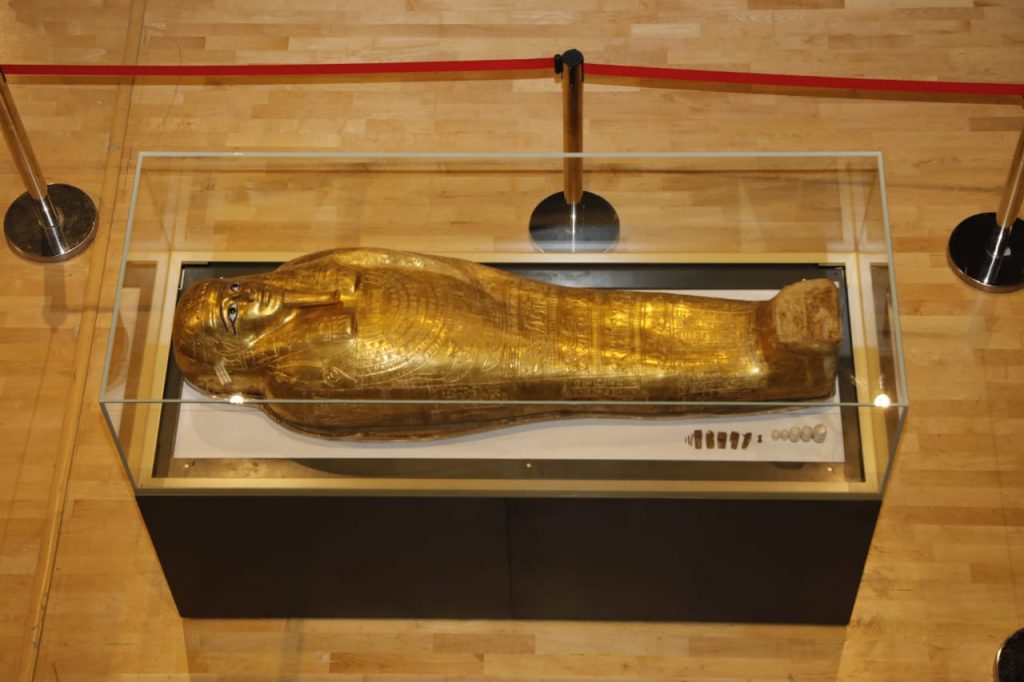Egypt’s Antiquities Ministry has put the golden coffin of pharaonic priest Nedjemankh on display at the National Museum of Egyptian Civilization in Fustat after its recovery from the US.
Nedjemankh gold coffin was stolen in 2011 by antiquities traffickers and sold to New York’s Metropolitan Museum of Art in 2017 for about $4 million using fake import papers.
The golden sarcophagus of Nedjemankh was displayed in the attendance of Minister of Antiquities Khaled al-Anani, Secretary of the Supreme Council of Antiquities Mostafa Waziri and a number of foreign ambassadors and representatives of archaeological missions in Egypt. The Egyptian diplomatic efforts succeeded in recovering the golden sarcophagus of the Pharaonic priest, Nedjemankh, as part of the growing international efforts to combat the black market of antiquities and the exceptional efforts of the Egyptian state to retrieve its stolen artifacts.
The golden sarcophagus is made in the shape of a mummy and is 6 feet (2 meters) long. It is subtly made of wood and metal. The sarcophagus is covered with gold plates, elaborately decorated with hieroglyphic scenes and texts aimed at guiding the priest on his journey to eternal life. According to CNN reports, gold found in the coffin symbolizes the priest’s relationship with the Egyptian gods, where it was widely believed that the gods were made of precious metal. “This is not only for Egyptians but also for our common human heritage as we all share the same values and are parts of the same international family,” Minister of Foreign Affairs Sameh Shoukry said at the repatriation ceremony.
